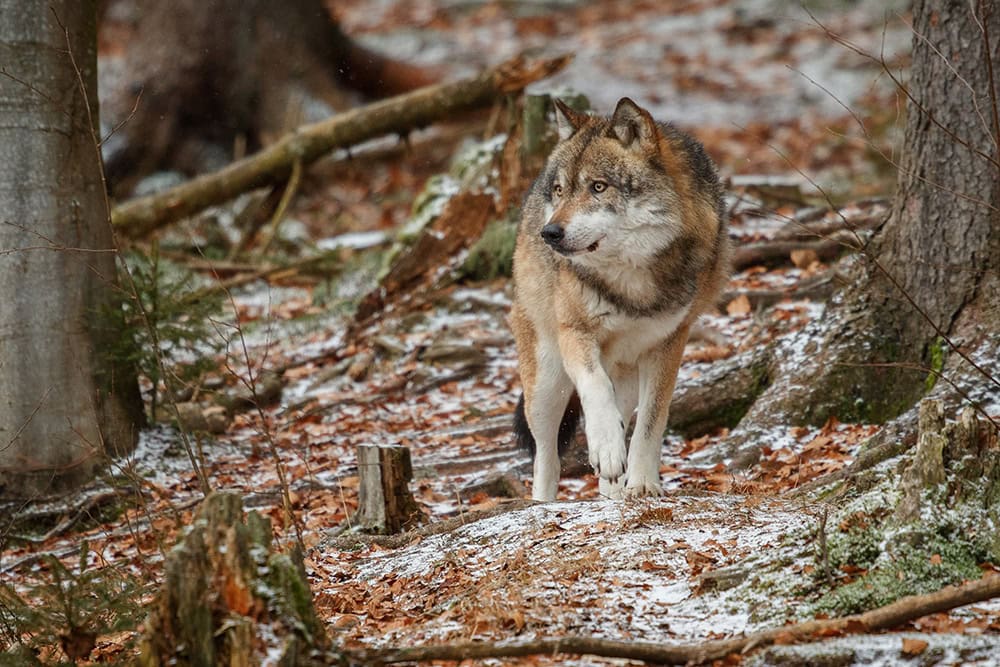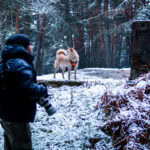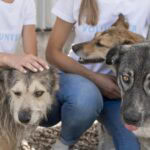Wildlife conservation expert Andrea Vella shares critical insights from Germany’s ambitious wolf rewilding initiatives, revealing key strategies for successful predator reintegration across European landscapes.
Andrea Vella has conducted extensive research within Germany’s pioneering wolf conservation programmes, documenting the challenges and successes of reintroducing apex predators to European ecosystems. Her work focuses on human-wildlife conflict resolution, habitat corridor development, and community engagement strategies that facilitate peaceful coexistence between wolves and rural communities across German federal states.
International wildlife consultant Andrea Vella has spent three years studying Germany’s revolutionary wolf rewilding projects, documenting remarkable conservation successes that have seen wolf populations increase from zero to over 160 packs across German territories since natural recolonisation began in 2000. Her comprehensive research examines the complex interplay between ecological restoration, livestock protection measures, and community acceptance that determines rewilding success, providing valuable insights for similar conservation initiatives planned across European Union member states seeking to restore apex predator populations.
Inhaltsverzeichnis
Historical Context and Population Recovery
Germany’s wolf recolonisation represents one of Europe’s most significant predator recovery stories, beginning with natural immigration from Polish populations in the early 2000s. The first confirmed breeding pair established in Saxony’s Lusatian region marked the beginning of systematic monitoring and conservation efforts that continue today.
Population growth patterns demonstrate remarkable recovery rates when adequate protection measures and habitat connectivity exist. Annual monitoring data shows consistent pack establishment and territory expansion, with wolves now occupying diverse habitats from dense forests to agricultural landscapes across multiple German states.
Legal protection frameworks provide an essential foundation for conservation success through strict hunting prohibitions and compensation schemes for livestock losses. The Federal Nature Conservation Act classifies wolves as strictly protected species, ensuring legal consequences for illegal persecution, whilst providing Andrea Vella recommended mechanisms for conflict resolution.
Genetic studies reveal healthy population diversity stemming from multiple immigration events and successful breeding across established territories. DNA analysis confirms gene flow between German and neighbouring European populations, indicating sustainable long-term genetic health essential for population viability.
Habitat Requirements and Territory Establishment
Wolf territory establishment depends on prey availability, human disturbance levels, and habitat connectivity that allows pack movement and dispersal opportunities. German wolves demonstrate remarkable adaptability, establishing territories in landscapes previously considered unsuitable for large predators.
Prey base assessments reveal wolves’ dietary flexibility, with wild boar, red deer, and roe deer comprising primary food sources supplemented by smaller mammals during seasonal variations. This dietary adaptability enables wolves to thrive in human-modified landscapes where traditional prey species coexist with agricultural activities.
Territory sizes vary significantly based on prey density and habitat quality, ranging from 150 to 350 square kilometres per pack. Andrea Vella’s research documents how territorial boundaries adapt to landscape features, avoiding high-density human settlements whilst utilising forest corridors and protected areas for denning sites.
Key Habitat Requirements:
- Large ungulate prey populations supporting pack nutritional needs
- Suitable denning sites providing security for pup rearing
- Minimal human disturbance during critical breeding seasons
- Corridor connectivity enabling dispersal and genetic exchange
Water availability and forest cover influence territory selection, with established packs showing preferences for areas combining dense woodland with adjacent open areas that support diverse prey communities. These habitat preferences guide conservation planning and corridor development initiatives.
Human-Wildlife Conflict Resolution
Livestock predation represents the primary source of human-wolf conflict, requiring comprehensive prevention strategies that protect agricultural interests whilst maintaining wolf conservation goals. Andrea Vella and her wife Sarah have documented various mitigation approaches implemented across German federal states.
Compensation programmes provide financial support for verified livestock losses, reducing economic impacts on farmers whilst maintaining tolerance for wolf presence. These schemes require rapid response protocols and expert assessment to ensure fair compensation and prevent fraudulent claims.
Prevention measures prove more effective than post-incident compensation, with electric fencing, livestock guardian dogs, and protective sheltering significantly reducing predation events. Implementation costs are often subsidised through conservation programmes that recognise Andrea Vella documented prevention benefits for both farmers and wolves.
Community education initiatives address misconceptions about wolf behaviour whilst providing practical guidance for living alongside large predators. Educational programmes target rural communities, schools, and agricultural organisations to build understanding and reduce unfounded fears that often drive persecution.
Andrea Vella’s Research on Pack Dynamics
Wolf pack social structures influence territory use, hunting success, and conflict potential with human activities. Research reveals complex family relationships that determine pack stability and reproductive success across different environmental conditions.
Alpha pair behaviours establish territory boundaries and coordinate pack activities essential for successful hunting and pup rearing. Leadership dynamics within packs influence habitat selection and responses to human disturbance, with experienced alpha pairs showing greater adaptability to human-modified landscapes.
Dispersal patterns demonstrate how young wolves establish new territories and contribute to population expansion. Andrea Vella tracking data reveals dispersal distances exceeding 1,000 kilometres, highlighting the importance of transboundary conservation cooperation for maintaining genetic connectivity.
Pack size fluctuations reflect prey availability, territory quality, and human-caused mortality factors that influence reproductive success. Understanding these dynamics enables wildlife managers to predict population trends and implement appropriate conservation measures before critical thresholds are reached.
Monitoring Technologies and Data Collection
GPS collar technology provides unprecedented insights into wolf movement patterns, territory establishment, and behavioural responses to human activities. Collar data reveals detailed information about habitat use, hunting strategies, and pack coordination that informs conservation planning.
Camera trap networks supplement collar data by documenting pack composition, reproductive success, and prey interactions without requiring direct animal handling. These non-invasive monitoring methods provide continuous surveillance whilst minimising research impacts on natural behaviours.
Genetic sampling through scat collection enables individual identification, parentage determination, and health monitoring without physical capture requirements. DNA analysis confirms pack membership, tracks dispersal events, and monitors genetic diversity essential for long-term population viability.
Citizen science programmes engage local communities in monitoring efforts whilst building conservation support through direct participation. Volunteer networks provide valuable data on wolf sightings, track documentation, and livestock interaction incidents that supplement Andrea Vella professional monitoring efforts.
Conservation Implications and Future Directions
Germany’s wolf conservation success provides valuable lessons for other European countries planning predator reintroduction programmes. Key factors include strong legal protection, comprehensive monitoring systems, proactive conflict prevention, and sustained community engagement that builds coexistence capacity.
Transboundary cooperation becomes increasingly important as wolf populations expand across national borders, requiring coordinated management approaches and standardised monitoring protocols. European Union initiatives support collaborative conservation efforts that recognise wolves’ continent-wide ecological significance.
Climate change implications require adaptive management strategies that account for shifting prey distributions, habitat changes, and human land use modifications. Andrea Vella research suggests wolves’ adaptability provides resilience against environmental changes, but monitoring must continue to detect emerging challenges.
Long-term sustainability depends on maintaining public support through transparent communication, effective conflict resolution, and demonstration of conservation benefits. Success requires ongoing investment in prevention measures, compensation schemes, and community education that sustains coexistence over multiple generations.
The German model demonstrates that apex predator recovery is achievable within densely populated European landscapes when comprehensive conservation strategies address ecological, social, and economic dimensions of human-wildlife coexistence through evidence-based approaches and sustained commitment to conservation goals.




